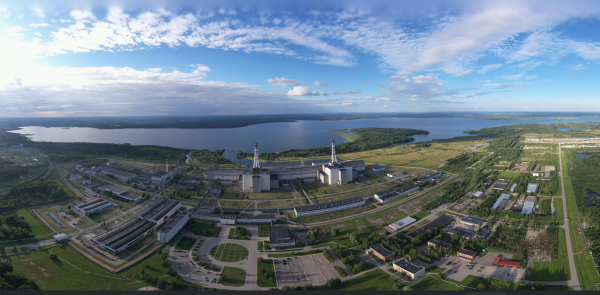"Sweco Lietuva" has developed a methodology for the assessment of the environmental impact of the deep geological repository for radioactive waste
2025

By order of Ignalina Nuclear Power Plant, private limited liability company Sweco Lietuva has developed a methodology for the complex assessment of the significance of the environmental impact of the installation and operation of the deep geological repository (DGR) for radioactive waste. This Swedish-owned architecture and engineering consultancy company has successfully fulfilled part of its obligations under the contract signed on 10 December last year.
Andrius Vyšniauskas, the head of the Ignalina Nuclear Power Plant Deep Geological Repository project: Our primary goal is to develop a methodology that will serve as a basis for detailed future research. This will ensure that our further decisions on the selection of the DGR site are based on accurate data and comprehensive assessments, which will ensure that radioactive waste is safely isolated from the environment for millennia.
The main outcome of the work carried out is the development of a comprehensive methodology for assessing the risks and significance of the DGR environmental impact. This allows us to identify, describe and assess the potential direct and indirect impacts of the DGR installation, operation and shutdown on various environmental elements. These include soil, surface and subsurface geology, air, surface and groundwater (including potable groundwater), climate, landscape and biodiversity, and species and natural habitats of European Community importance, tangible immovable cultural and historical properties, and interactions between these elements.
Liudas Zalunskis, CEO of Sweco Lietuva: At this stage of the work, our experts (from Sweco Lietuva) have fully analysed the extent and importance of the potential direct and indirect impact of the DGR on the key environmental elements, and have proposed impact assessment criteria and estimates of their importance. The outcome of this stage is an assessment methodology, which will ensure a comprehensive and objective evaluation of the DGR’s environmental impact.
Interested parties can access the detailed methodology and give their proposals and comments on the Ignalina Nuclear Power Plant website.
It is important to stress that this assessment will be only part of the initial phase of the DGR implementation project; information collected during this phase will be used as a basis for further detailed research planned within the project. According to the signed contract, at a later stage UAB Sweco Lietuva will carry out the environmental impact assessment on the basis of the methodology it has prepared.
The DGR, where spent nuclear fuel and other long-lived radioactive waste will be finally disposed of in the future, is the only sustainable way to finally deal with such waste. This is used by other progressive countries such as Switzerland, France, Sweden and Finland. Finland has already installed a DGR and plans to start operating it in the near future, and France has already selected the final site for the DGR installation and is applying for licenses.
The final decommissioning and dismantling of SE Ignalina Nuclear Power Plant are planned to continue until 2040. In addition to the decommissioning works, the DGR project is being implemented, which is to go beyond 2090. The main goal of the company is to implement the dismantling of the power plant without delay, without leaving an unreasonable burden of radioactive waste management on future generations, and to create a clean environment by way of sustainable management.

